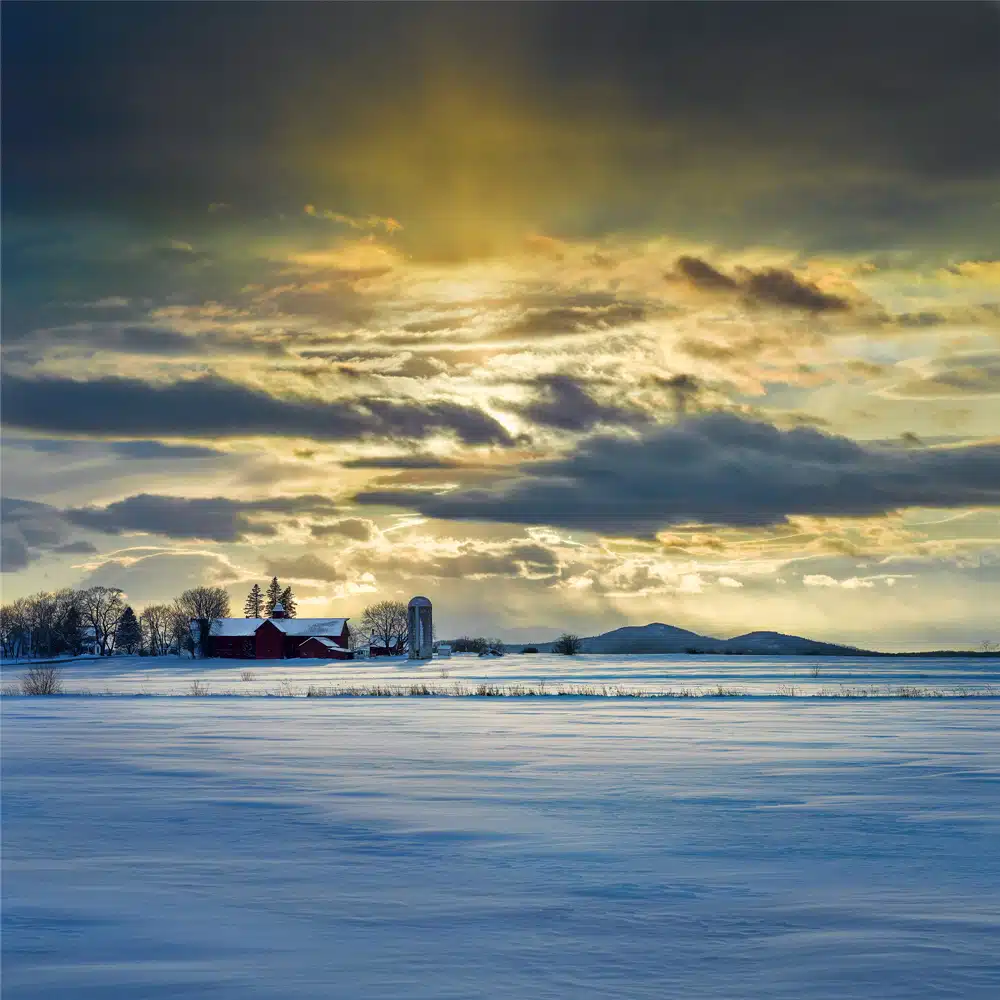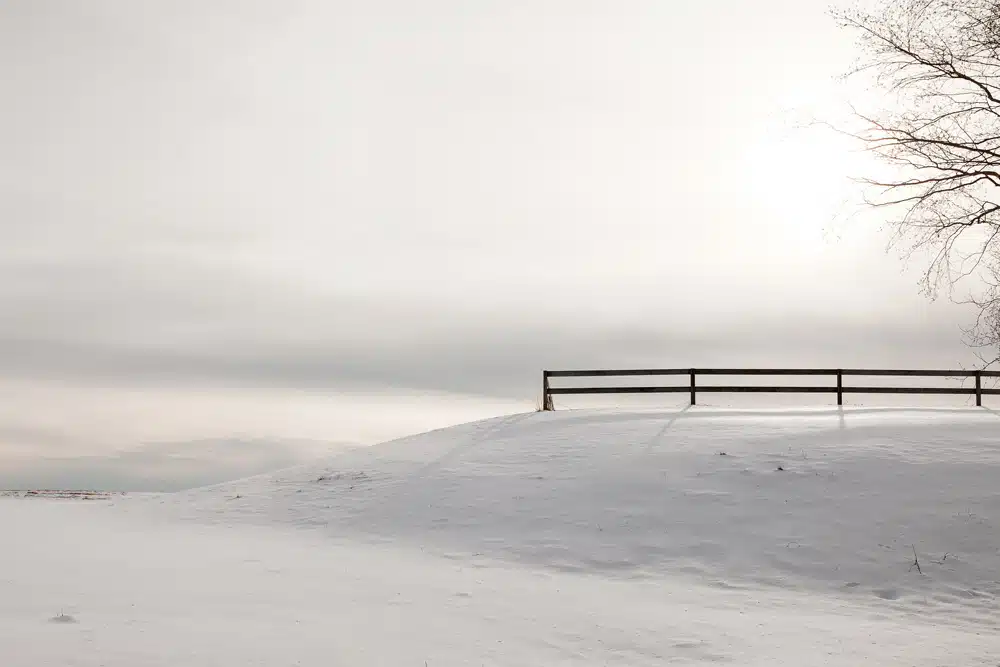Winter Sun | First Light
It is leaner than the light of other seasons— more disciplined, more rigorous, and somehow closer to the truth.

Coffee By Design | Portland, Maine
Photo Credit : Katherine Keenan
Photo Credit : Jacob Hessler
Seen from this house on one of the short days of winter, the sun sneaks up over the eastern ridge in the direction of the village of Dummerston at about seven in the morning. It dodges furtively across the southern sky like a pickpocket at a county fair. By half past three in the afternoon it has darted behind the hill to the west, toward South Newfane. And there you have it: a winter day. The sun’s transit, confined to the seven-mile trip between these two Vermont hamlets, is hurried and perfunctory. The winter sun itself has none of the ease or leisure of other seasons, and it has no more warmth than a landlord’s smile. The day is over almost before it has begun.
On many overcast winter mornings, I have noticed, the sun is visible at all only at the very beginning and again at the very end of its brief day. It appears momentarily between the cloud cover and the horizon at sunrise and again at sundown, but otherwise it is hidden. On such a day in summer or autumn, it might mount above the clouds and reappear around noon, but in winter the arc of the sun’s path is too shallow to carry it so high.
The winter day and the peculiar, candid light it brings are all an affair of arcs and angles. The sun itself is 91,918,707 miles away from Dummerston and South Newfane. Over a distance that great, the difference between our closeness to the sun in summer and in winter doesn’t amount to much. Rather it is the changing angle with the horizon of the sun’s apparent path that gives us our seasons. In the northern summer, the earth, orbiting the sun on its tilted axis, leans toward the sun. The sun rises and sets relatively far to the north along the horizon, and its path intersecting the horizon makes a wide angle that carries the sun steeply to the top of the sky and keeps it there for most of the day. In winter the northern hemisphere leans away from the sun. All the angles are narrowed. The sun rises far to the south along the horizon, and its course takes it past the horizon at a sharp angle, allowing it only a small corner of the sky to pass through before it sets. To figure for yourself the changing geometry of the summer and winter sun, think of slicing a melon crosswise, first near the middle, then far to one end.

Photo Credit : Jim Westphalen
In return for the elusive winter day, the north gets winter light: a simplified, purified reduction of the softer light of summer and fall. In summer the light is long, the shadows deep, the colors rich; winter light is leaner in every way, but just for that reason it seems by comparison more rigorous, more disciplined, and somehow closer to the truth—as though summer light were a novel, winter light a sonnet.
The fierce simplicity of winter light is evident in its disdain of shadow. Shadows—converging, changing their shapes, approaching, receding—are the essence of the light of other seasons, but winter light has little use for shadows, and where it employs them, they are pale, gray, and short, like the winter day. Winter light will not stand for any mystery. It strips the woodland of its shadows and makes each tree, each branch, each rock stand forth for what it really is. Winter light is light that scours and diminishes, but makes more keen.
Again, while sunlight in summer or fall borrows the colors of the landscape—green, yellow, brown—winter light seems to have color of its own. The icy, bitter blue of a fine winter noon is no earthly color, but belongs to the light itself. And similarly for the moment of winter light that to me seems to sum it up, when, crossing a clearing in the brief dusk, I come to a wooded rise to the west and see the sun set behind the hill in a wash ash of old rose, darkening to scarlet and crimson. That last quick flash of light is lurid, fiery, uniquely wild. Behind the black bars of the tree trunks in the wood, the winter sunset is like a tiger.
Originally titled “Winter Light,” this essay was first published in the February 1993 issue of Yankee.





Wonderful